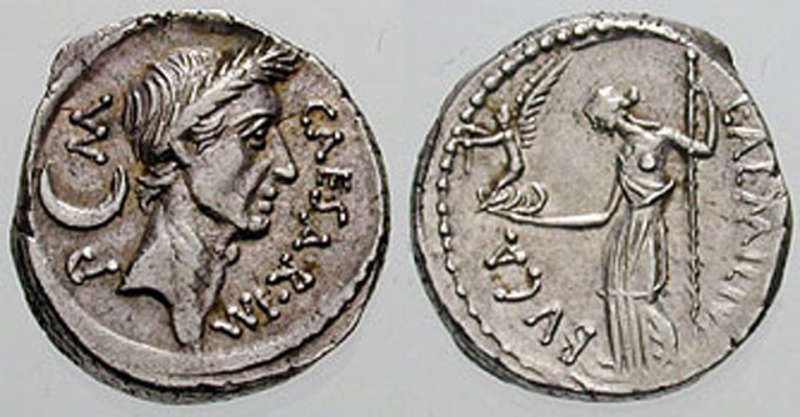Credit & Copyright: Classical Numismatic Group, Inc.,
Wikimedia
Explanation:
Today, February 29th, is a
leap day - a relatively rare occurrence.
In 46 BC, Julius Caesar,
featured here in a self-decreed minted coin, created a calendar system that added
one leap day
every four years.
Acting on advice by Alexandrian
astronomer
Sosigenes,
Caesar did this to make up for the fact that the Earth's
year is slightly more than 365 days.
In modern terms, the time it takes for the
Earth to circle
the Sun is slightly more than the
time it takes for the
Earth to rotate 365 times (with respect
to the Sun -- actually we now know this takes about 365.24219 rotations).
So, if calendar years contained 365 days they would drift
from the actual year by about 1 day every 4 years.
Eventually July (named posthumously for Julius Caesar himself) would occur during the northern
hemisphere winter!
By adopting a leap year with an extra day every four years,
the calendar year would drift much
less.
This Julian Calendar
system was used until the year 1582 when
Pope Gregory XIII
provided further fine-tuning when he added that leap days
should not occur in years ending in "00", unless divisible by 400.
This Gregorian Calendar system is the one in common use today.
1999 2000 2001 2002 2003 2004 2005 2006 2007 2008 2009 2010 2011 2012 2013 2014 2015 2016 2017 2018 2019 2020 2021 2022 2023 2024 2025 |
Январь Февраль Март Апрель Май Июнь Июль Август Сентябрь Октябрь Ноябрь Декабрь |
NASA Web Site Statements, Warnings, and Disclaimers
NASA Official: Jay Norris. Specific rights apply.
A service of: LHEA at NASA / GSFC
& Michigan Tech. U.
|
Публикации с ключевыми словами:
календарь - год, високосный - год, календарный
Публикации со словами: календарь - год, високосный - год, календарный | |
См. также:
Все публикации на ту же тему >> | |
